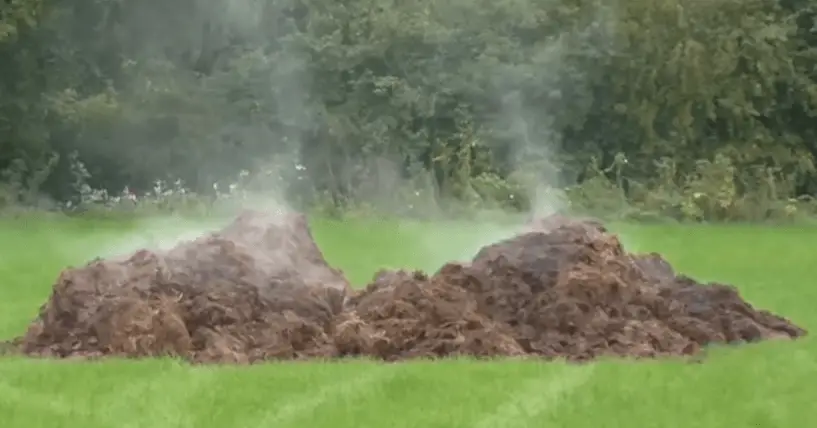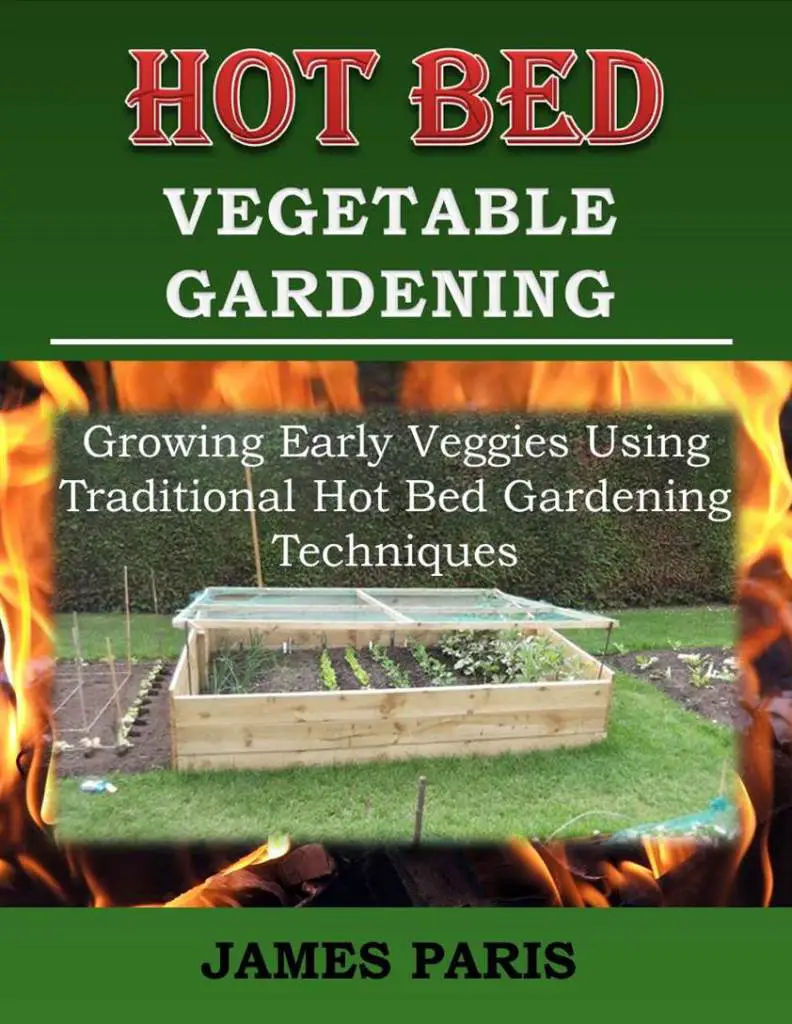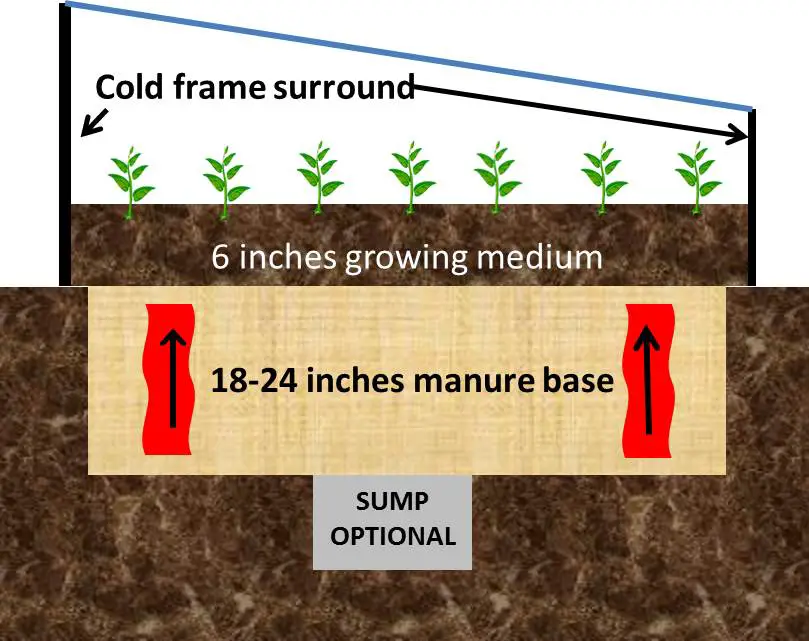If you are a gardener and you have a source of either fresh or composted horse manure, then you are indeed blessed for horse manure is particularly good for most garden plants and vegetables.
Most experienced gardeners will tell you that the manure must first of all be composted before you can use it to feed your plants, and indeed there is some merit in this advice. However there are a couple of instances where you can indeed just use the raw manure rather than wait the 4-6 months minimum composting time.
How Does Horse Manure Benefit Leafy Plants?
Leafy plants thrive on nutrients, and horse manure is a fantastic natural fertilizer packed with essential nitrogen, which these plants crave. During winter, nitrogen can be rapidly depleted from the soil, leaving plants undernourished.
Key Benefits:
- Rich Nutrient Source: Horse manure supplies a high concentration of nitrogen, crucial for plant growth and lush foliage.
- Soil Health: It enriches the soil, enhancing its ability to retain moisture and absorb nutrients, which is vital for plant vitality.
- Sustainable Fertilization: As an organic material, horse manure slowly releases nutrients, ensuring a consistent food source for plants.
By annually applying horse manure, gardeners ensure their leafy plants receive a valuable nutrient boost that promotes healthy growth throughout the year.
How to apply fresh horse manure in the garden
Using horse manure in your garden can be a game-changer, but knowing how and when to apply it is crucial for reaping its full benefits.
- Manure tea: This is a slurry mix made by adding manure to a barrel of water and leaving it for a couple of weeks or more to mature. Thereafter, you just add 1-2 inches to the bottom of a watering can filled with water and feed your plants twice per week – especially fruiting plants like tomatoes.
- Hot bed gardens: This technique indeed relies on fresh manure to create heat and is particularly useful for those keen to get an early start in the vegetable garden. (See more below on hot bed gardening).
- To use raw manure that has not been composted, dig it into the soil at the end of the season. Over the next few months, it will break down to some extent and add valuable nutrients for the spring plants.
Timing and benefits of manure application
The best time to add horse manure depends on its state. For well-rotted manure, any time between now and March is ideal, as it allows earthworms to integrate it into the soil by spring. If you’re dealing with fresher manure, apply it in the autumn. The winter weather helps to mellow its raw strength before planting season.
Manure is particularly beneficial for poor, light, dry soils, enhancing their weight and moisture retention. Regular applications can dramatically improve soil health, increasing earthworm populations by up to tenfold over three years—an impressive transformation for any allotment.
Using composted horse manure
The beginning of the growing season is the perfect time to integrate composted manure. This is done by simply digging it into the soil. Some vegetables, like leeks, or flowers such as roses, thrive on the high nitrogen content of horse manure. Often, a trench is dug first, a layer of manure laid along the bottom, and then covered over before planting begins.
While horse manure is a fantastic natural fertilizer, it’s essential to apply it wisely. Avoid areas where you plan to cultivate wildflowers, as the rich soil can encourage unwanted grasses and weeds. As long as it’s not overflowing from raised beds, you can apply it generously without the risks associated with chemical fertilizers.
By understanding these methods and timing, you can maximize the benefits of horse manure, ensuring a thriving and productive garden.
Using composted horse manure
If you are lucky enough to have access to a dung heap, then be sure to pull away the manure on the top and concentrate on the manure at the bottom of the heap. This is the manure that will be most rotted and should ideally be moist and friable or crumbly to the touch – not smelly and slimy!
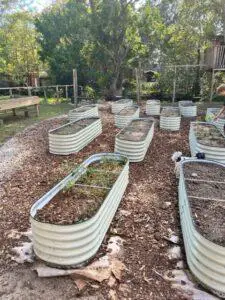
It is also important to choose a dung heap where the stables use straw for bedding and not wood shavings. The wood shavings take years to compost down, making them not ideal for garden use. Indeed many farmers will not use dung that is mixed with wood shavings for this reason.
and not wood shavings. The wood shavings take years to compost down, making them not ideal for garden use. Indeed many farmers will not use dung that is mixed with wood shavings for this reason.
Sawdust which is also sometimes used for bedding is also not ideal, but at least it will break down into compost a lot quicker than shavings.
is also not ideal, but at least it will break down into compost a lot quicker than shavings.
Even straw will take 2 years or more to completely break down into compost, however it is excellent for conditioning and adding ‘friability’ into the soil as it does so.
The best time to add the composted manure is at the beginning of the season. This is done by simply digging it in to the soil. Some vegetables like Leeks, or flowers such as Roses, love the high nitrogen content of horse manure, so often a track is dug out first of all and a layer of the manure laid along the bottom then covered over before planting begins.
Overcoming Challenges in Acquiring Horse Manure
Getting your hands on horse manure can be more daunting than it sounds. If you’re lucky enough to live in the countryside, chances are you have a local source. But for others, it may require some networking. Start by asking around, as many people are often willing to part with this valuable resource.
Transportation and Storage
Once you’ve located a source, the next hurdle is transporting it. Horse manure is not only bulky but can be heavy, especially when wet. Ideally, arrange for delivery if possible. And remember—what seems like a lot of manure often goes quicker than anticipated. It’s wise to take as much as you’re able to store and use effectively.
Quality Concerns
Before hauling it home, ascertain its quality. The manure’s origin and storage conditions are crucial, as it might be tainted with unwanted substances, such as residual weedkillers or invasive weed seeds. These contaminants can adversely affect your garden, so it’s essential to verify this with the supplier.
Utilization Tips
If you find yourself with an excess after application, simply store the surplus in a designated area to decompose further until needed. Alternatively, friends or fellow gardeners might gladly take it off your hands.
By understanding these challenges and preparing accordingly, you can make the most of this nutrient-rich resource for your garden.
How Does Manure Enhance Soil Water Retention?
Adding manure to your garden isn’t just a tradition, it’s a science-backed method for improving soil health—particularly its ability to retain water. Here’s how it works:
- Enhancing Soil Structure: Manure adds organic matter to the soil, which helps to improve its overall structure. This organic matter forms aggregates, or clusters of soil particles, that create pores within the soil. These pores effectively hold water, making it available to plants for longer periods.
- Increase in Organic Content: Rich in decomposing material, manure boosts the organic content of your soil. Higher organic content acts like a sponge, absorbing and holding onto moisture. This mimics how peat works but in a more sustainable way.
- Promotion of Microbial Activity: When manure is added to the soil, it stimulates microbial activity. A thriving microbial community aids in breaking down organic matter further, releasing nutrients slowly—while also helping to maintain moisture balance by improving the soil structure.
- Nutrient Retention Support: Along with water, nutrients are also better retained. This ensures that plants have access not only to moisture but also to essential macro and micronutrients, supporting healthier growth.
Practical Tips for Using Manure
- Choose the Right Type: Ensure you’re using well-rotted manure to prevent any potential nitrogen burn in plants.
- Incorporate it Properly: Mix it into the soil thoroughly rather than just spreading it on the surface.
- Time it Right: Apply manure in the off-season or before planting to allow time for nutrients to integrate into the soil.
By following these guidelines, adding manure can transform your garden, providing a reservoir of moisture that helps your plants flourish even in dryer spells.
Understanding Spent Mushroom Compost: Uses and Limitations in Gardening
What is Spent Mushroom Compost?
Spent mushroom compost is a byproduct of mushroom farming. Once mushrooms are harvested, the remaining substrate—a mix of organic materials like straw, hay, and manure—is what’s left behind. While it’s often seen as waste in commercial operations, home gardeners find it valuable for its unique properties.
Uses in Gardening
- Soil Structure Improvement: One of the primary benefits of spent mushroom compost is its ability to enhance soil structure. It helps with nutrient retention and improves drainage, making it ideal for heavy clay soils or compacted gardens.
- Mulching: This compost can effectively be used as mulch, providing a protective barrier that conserves moisture, suppresses weeds, and gradually breaks down to nourish your soil.
- Organic Matter Addition: It adds organic matter to your garden, which can support beneficial microorganisms and increase the overall health of the soil ecosystem.
Limitations to Consider
- Nutrient Content: Although it contributes to soil health, its nutrient profile is relatively low compared to other types of compost. Gardeners should not rely on it as the sole source of plant nutrition.
- Alkalinity: Spent mushroom compost tends to be alkaline. This makes it unsuitable for use on alkaline soils, such as those containing chalk or lime. It’s crucial to test your soil first to ensure compatibility.
In summary, while spent mushroom compost is a fantastic tool for improving soil structure and providing organic matter, it’s essential to complement it with additional fertilization, especially if your plants have high nutrient needs. Always consider your soil’s pH before application to avoid potential issues.
How Does Regular Manure Application Affect Earthworm Populations in the Soil?
Applying manure to soil on an annual basis can significantly boost earthworm populations. When manure is consistently introduced to the soil over a period of three years, studies indicate an impressive tenfold increase in earthworm numbers.
This boost in earthworm activity is likely due to the nutrient-rich environment that manure creates, fostering a habitat where earthworms can thrive. On a well-maintained allotment, the effects are quite visible, with rich, fertile soil teeming with life. More earthworms enhance soil structure and fertility, making it a win-win for gardeners and the environment alike.
Hot Bed Gardening with fresh manure
Earlier I mentioned the idea of using fresh manure to create a ‘Hot Bed’. This is an excellent way to get an early start with vegetables in particular, and if you have a ready supply of fresh manure then it really is a no-brainer for the vegetable grower.
The idea of using fresh manure to create a Hot Bed system was originally thought of by the Parisians in the late 19th century. They realised that they had mountains of manure from the horses that crammed the streets of Paris. Wondered what they could do with it all – and the Hot Bed Garden was formed.
This enabled them to produce and get on the market vegetables at least a month before everybody else. Other European cities soon clocked on to the idea though!
Creating a hot bed garden is quite a simple matter. The idea being that you are building up a base of fresh manure at least 18-24 inches deep, then covering it with a layer of topsoil for planting your veggies.
The fresh manure will begin to heat as it is in the beginning phase of composting, and this heating period will last for around 6 weeks or so. This is an important note – only fresh manure will heat up like this as the nitrogen in the manure excites the tiny microbes that start the composting process.
Manure that has already been rotting for some time is no use for a Hot Bed – but ideal for adding to your veggie plot or perhaps steel Raised bed garden.
This type of garden method is usually created inside a Raised Bed area or under a cold-frame as you may see in the accompanying image. Either way, it is an excellent way to start the vegetable growing season.
as you may see in the accompanying image. Either way, it is an excellent way to start the vegetable growing season.
Should fresh manure be used in the garden?
Generally speaking, unless you are using the hot bed system the answer would be NO. Fresh manure of any kind (with the exception of rabbit manure) can carry dangerous organisms, worms, diseases, and bacteria like E.coli or Salmonella amongst others.
or Salmonella amongst others.
Handling fresh manure has to be done with care and a strict hand washing routine in place.
Whilst manure has been used in the garden since the beginning of time, keeping basic precautions such as hand washing, will help you avoid any possible health problems that may occasionally arise.
Also as a rule you do not put raw manure on the ground where vegetables such as cucumber or melon may be in direct contact with it. This includes vegetables under the soil such as carrots, potatoes, beets.
To avoid the possibility of contamination from raw manure it is recommended that you stop feeding 120 days prior to harvesting any vegetable that may come in to contact with it.
This also applies to the use of manure ‘tea’ which by its very nature is a potential health risk.
This rule does not apply in the same way to fully composted manure, however general hygiene rules should always apply where manure of any kind is used – just to be on the safe side!
Why Avoid Sowing Seeds Directly on Manure Mulch?
When considering where to sow seeds, it’s crucial to choose the optimal environment to encourage healthy germination and growth. Placing seeds directly on a manure mulch is not recommended for several reasons:
- Nutrient Overload: Manure is rich in nutrients, which might seem beneficial. However, the nutrient concentration can be excessively high for young seeds. This can lead to nutrient burn, damaging or inhibiting early growth.
- Texture and Consistency: Manure mulch tends to be coarse and uneven. Such a texture is not ideal for tiny seeds as they struggle to establish themselves in this uneven terrain. Seeds need good soil contact, and a rough surface can prevent proper embedding in the soil.
- Moisture Retention Issues: While manure can retain moisture, its irregular nature can lead to inconsistent moisture distribution. This inconsistency can dry seeds out or suffocate them with too much moisture in certain areas.
- Potential Pathogens: Raw or improperly composted manure might harbor pathogens harmful to seeds or seedlings. These pathogens can include fungi or bacteria detrimental to seedling health.
For successful germination, it’s best to sow seeds in well-prepared, fine soil, ensuring a balance of nutrients, texture, and moisture. Your seeds will thank you with robust growth and thriving plants.
Other animal manure that can be used in the garden include…
- Chicken manure. Very high in nitrogen content. Best after composting for at least 1-2 years.
- Cow manure. Similar to horse manure for nitrogen and other nutrients but not so good for soil conditioning.
- Sheep manure. Similar to Goat, Llama, and Alpaca, sheep manure is high in nitrogen content making it an excellent choice for the vegetable plot. Best composted before use for at least a year before adding to the soil.
- Pig manure. This manure is a little more controversial as a pig is an omnivore (meaning it eats vegetables and meat). Generally speaking you do not add the manure from any carnivore to compost because of the potential of parasitic contamination. This includes the dung from cats and dogs. Commercially composted pig manure that has been hot composted is a safe option for the garden.
- Rabbit dung. Amongst all the small farm animals, the humble rabbit is popular for producing droppings that can be added directly to the soil without composting. Even direct to pots and containers. It is higher in nitrogen than goat, chicken, sheep, cow or horse manure.
While these manures offer various benefits, horse manure stands out as an excellent general fertilizer. Its richness in organic matter makes it highly beneficial for soil conditioning, offering a more mellow alternative compared to the concentrated nature of other manures. This balance ensures it can be used more freely and in larger quantities without overwhelming the plants.
Additionally, horse manure provides a dual advantage of improving soil structure and adding essential nutrients, unlike spent mushroom compost, which is primarily a structure improver with limited nutrient contribution. This makes horse manure a versatile choice for gardeners looking to enhance both soil health and fertility.
When choosing manure, consider your soil type. For instance, mushroom compost tends to be alkaline and may not suit already alkaline soils, whereas horse manure is generally more adaptable. By understanding these differences, you can select the best manure to meet your garden’s specific needs.
Final Thoughts
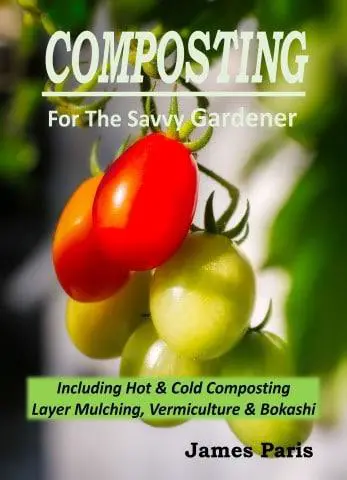
Out of all the choices of animal manure for the garden my favourite is still Horse manure – both in its raw form for hot bed gardens and liquid feeds, and composted to add to and rejuvenate my Raised Beds.
Yes, there are some dangers involved with using raw manure from any animal. However this must be balanced against the benefits that these natural by-products ‘bring to the table’ literally in the form of fresh grown healthy vegetables.
Just take simple precautions and wash your hands regularly – something that most of us are familiar with in the 2020 covid-19 era!


